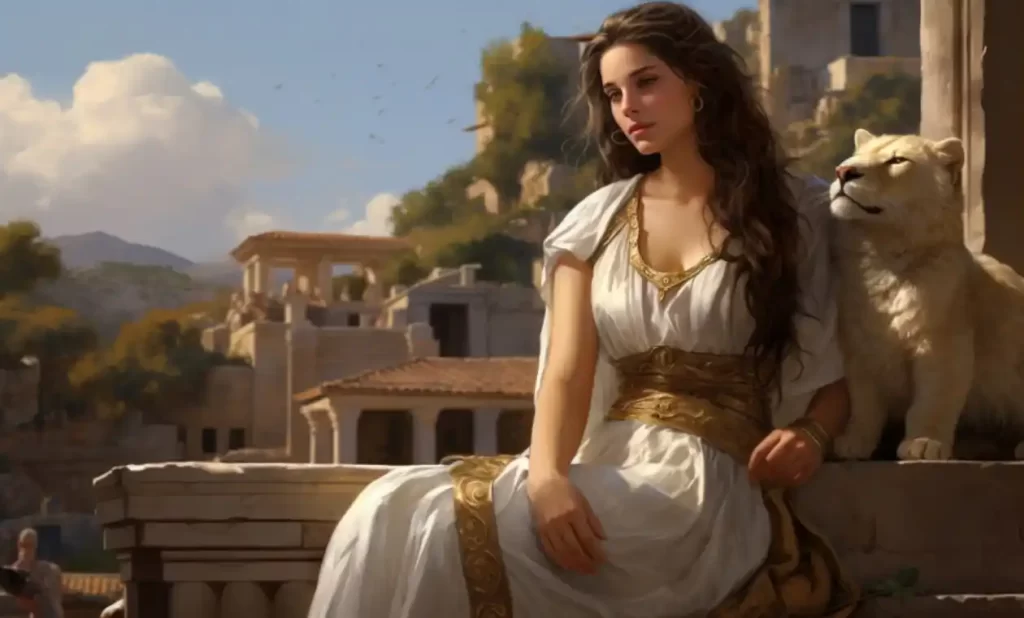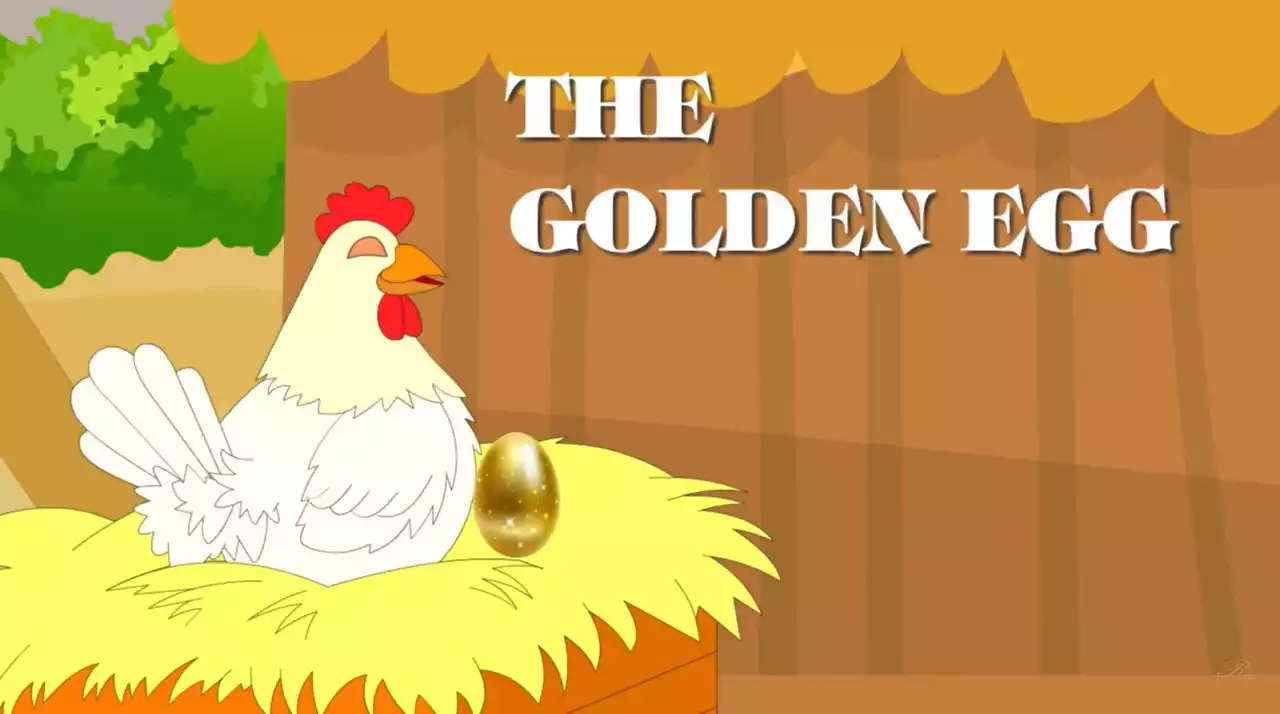
In the heart of ancient Rome’s captivating mythological landscape, where gods and goddesses weaved their tales, one figure stood out as a guardian of nature’s abundance. The Roman pantheon was a realm of enchantment, where deities held sway over various aspects of life, guiding mortals through their earthly journey. These divine beings weren’t just figures of worship; they were reflections of human aspirations, emotions, and the very essence of Roman culture.
Among these revered figures, there existed a goddess whose presence was intimately intertwined with the lush landscapes and fertile fields that adorned the empire. This goddess, known as Pomona, was not just another deity; she was the embodiment of the lushness and vitality that thrived within the heart of every orchard and garden.
In the rich tapestry of Roman mythology, deities held a pivotal role. They were conduits between the mortal realm and the ethereal world, bridging the gap between human aspirations and the mysteries of the universe. These gods and goddesses guided Romans through life’s triumphs and challenges, offering a glimpse into the divine forces that shaped their destinies.
Amidst this cosmic cast, Pomona shone as the goddess who nurtured the very essence of sustenance. She was the guardian of fruit trees and orchards, the one who tended to the delicate blossoms, ensuring they bore the sweetest of fruits. In her domain, the cycles of growth and harvest found a divine custodian, and the abundance of nature’s gifts flowed as a testament to her benevolence.
Pomona’s story is more than a tale of divine power; it’s a celebration of the interplay between humanity and nature, a reminder that the earth’s bounty is to be cherished and protected. As we delve deeper into her mythology, we’ll uncover the intricacies of her role, her connection to Roman culture, and the enduring legacy that continues to inspire a reverence for the world’s natural wonders. Join us as we embark on a journey through time and myth, where Pomona’s presence remains evergreen, nurturing the gardens of our imagination.
Who was Pomona? • Explain Pomona’s divine identity and role in Roman mythology. • Describe her characteristics as a nurturing and protective goddess. • Mention her importance in the realm of agriculture and horticulture.
Who was Pomona? Nurturing Guardian of Nature’s Bounty
Pomona, a luminous figure within the tapestry of Roman mythology, was more than a mere goddess; she was the embodiment of life’s verdant splendor. As the divine custodian of fruit trees and orchards, Pomona held a special place in the pantheon, her influence extending far beyond the ethereal realm. Her story wove together the threads of nature, fertility, and human connection in a harmonious tapestry.
In the realm of Roman mythology, Pomona’s identity was rooted in her guardianship of nature’s bounty. With each whispering breeze and each rustling leaf, her essence resonated through the orchards, nurturing the growth of fruits and blossoms. Her role was not just that of a passive observer, but a hands-on protector, ensuring that the delicate balance between growth and harvest remained unbroken.
Pomona’s characteristics mirrored the essence of the world she oversaw. With a heart brimming with compassion, she was a nurturing goddess, much like a caring mother tending to her children. Her fingers, gentle as the caress of sunlight on petals, guided the natural world towards its full potential. Her watchful gaze was a testament to her dedication, as she safeguarded the sanctity of every orchard and garden under her care.
Agriculture and horticulture were deeply ingrained in the fabric of ancient Roman society. The prosperity of the empire relied heavily on the cultivation of the land, and Pomona played a vital role in this intricate web of sustenance. Her importance extended beyond the superficial realm of deities; she was a symbol of the intertwined relationship between humans and nature, a reminder that the earth’s gifts were to be cherished and nurtured.
Pomona’s Role and Symbolism

In the heart of the Roman countryside, where the tapestry of nature and myth intertwined, Pomona’s presence was a symphony of life and abundance. She was the guardian of gardens, the nurturer of orchards, and the embodiment of the blessings that sprouted from the earth’s embrace. Her role transcended the divine; it was a sacred pact between humanity and the natural world, a dance of growth and harvest that painted the landscape with vibrant hues.
The connection between Pomona and the cultivation of fruit trees and orchards was as intricate as the delicate petals of a blossom. With her watchful eye, she oversaw every stage of growth – from the first tender leaves that unfurled in the warmth of spring to the ripe, succulent fruits that adorned branches in the sun’s embrace. Her touch was a gentle caress that whispered encouragement to the earth, coaxing it to yield its treasures.
As a guardian of gardens, Pomona’s role extended beyond the act of cultivation; it was a commitment to ensuring a bountiful harvest. She understood the delicate balance that governed the cycles of life, recognizing the importance of nurturing and care. Her presence in the orchards was a reminder that the human touch, guided by reverence and understanding, could transform the landscape into a paradise of fruits and blossoms.
But Pomona was more than just a caretaker; she embodied the very essence of fertility and fruitfulness. Her symbolism was interwoven with the eternal dance of life, a celebration of the earth’s ability to bring forth sustenance and joy. The fruits that adorned her domain were not merely physical manifestations; they were symbols of life’s abundant gifts, a testament to nature’s generosity and the promise of renewal.
Pomona’s legacy went beyond the orchards and gardens. It was a reminder that our relationship with the natural world was a partnership, one that required reverence, care, and a deep appreciation for the interconnectedness of all life forms. As we continue to unravel the stories that celebrate her influence, we’ll witness how her nurturing spirit found its way into the hearts of those who tended the land, fostering a deep respect for the cycles of growth that sustained civilizations for generations.
Depictions in Art and Literature
In the tapestry of Roman mythology, where gods and goddesses adorned the canvas of culture, Pomona’s graceful presence was captured in art and literature, immortalizing her role as the guardian of nature’s bounty. Across sculptures, paintings, and poetic verses, her essence radiated through the creative expressions of her worshippers, reminding them of the delicate dance between humanity and the world of flora.
Pomona’s depictions in art were a testament to her nurturing spirit. Artists of ancient Rome captured her essence with meticulous detail, often portraying her surrounded by baskets brimming with the lush abundance of fruits and flowers. These visual compositions were not just mere portrayals; they were windows into her world, a world where nature’s beauty and human devotion converged in harmonious unity.
Among the most common portrayals, Pomona stood adorned with a crown of blossoms, her gaze tender and nurturing as she cradled a basket of ripe fruits against her chest. The fruits, painted with lifelike hues, seemed to mirror her benevolent spirit – a symbol of the gifts that nature bestowed upon those who revered her. These artistic renditions were not just symbols; they were invitations to partake in the embrace of nature’s bounty.
Pomona’s presence also graced the pages of Roman literature and poetry. Poets weaved verses that celebrated her divine role as the guardian of gardens and orchards. Her name danced through lines of odes and sonnets, painted with words that captured her nurturing essence. In the verses of poets, her image was etched – a goddess whose touch breathed life into blossoms and bore fruits of unmatched sweetness.
The Story of Pomona and Vertumnus: A Tale of Love and Transformation
Amidst the gardens and orchards that Pomona lovingly tended, a tale of love and transformation bloomed like the flowers under her care. This story, woven with the threads of devotion and disguise, showcased the depths of human emotions and the profound connection between nature and the heart.
At the heart of this narrative was Vertumnus, a god of change and seasons, who had set his heart on Pomona’s radiant spirit. Struck by the purity of her devotion to the natural world, Vertumnus resolved to win her affection, even if it meant taking on different guises to touch her heart.
Vertumnus’ clever disguises became the embodiment of his determination. Like a master of thespian arts, he transformed into various forms – a reaper, a ploughman, a fisherman – each persona a reflection of the labor and dedication that Pomona herself poured into her gardens. With each transformation, he shared tales of love and admiration, stories that celebrated the very essence of Pomona’s nurturing spirit.
Through his subtle words and gentle actions, Vertumnus revealed his true intentions. His disguises, like the changing seasons, mirrored the cyclical patterns of nature itself. Just as Pomona tended to her gardens with unwavering dedication, Vertumnus too tended to the garden of her heart, hoping that the seeds of his affection would find fertile ground.
The tale of Pomona and Vertumnus was more than a mere romantic interlude; it was a reminder of the interconnectedness between humanity and the natural world. Just as Vertumnus disguised himself to win Pomona’s affection, we, too, must adapt and change to nurture the environment that sustains us. The story underscored the importance of tending to both the physical landscapes and the relationships that bind us to them.
Pomona in Roman Festivals: Celebrating Abundance and Blessings
In the heart of ancient Rome, where gods and mortals coexisted in a tapestry of reverence, the goddess Pomona was celebrated with festivals that mirrored her nurturing spirit. These festivals were not merely occasions of merriment; they were expressions of gratitude for the bountiful gifts that nature provided and a tribute to the goddess who guarded the orchards and gardens that sustained the empire.
One such festival dedicated to Pomona was the Pomona Festival, also known as Pomonalia. This joyful celebration marked the arrival of autumn, a season of harvest and abundance. Held on November 1st, it was a time when Romans came together to honor the goddess who ensured that the earth yielded its fruits in plenty. The Pomona Festival held a mirror to the heart of Roman society, reflecting their deep connection to the land and their acknowledgment of the divine forces that shaped their lives.
The significance of the Pomona Festival extended beyond the surface revelries. It was a reminder that the act of tending to the land was not just a duty; it was a sacred responsibility. During the festival, people adorned themselves with wreaths and garlands made of fruits and blossoms, paying homage to the goddess who guided the growth of nature’s treasures. These floral offerings were more than mere decorations; they were tokens of gratitude, expressions of the symbiotic relationship between humans and the earth.
The customs and rituals associated with the Pomona Festival were a testament to the intimate bond between Roman society and the land that nurtured them. Families would gather in gardens and orchards, sharing stories and laughter as they feasted on the fruits that Pomona’s blessings had bestowed upon them. It was a time of community, a time when individuals paused to appreciate the beauty of nature and the fruits of their labor.
Worship and Offerings to Pomona: Reverence for Nature’s Guardian

In the heart of ancient Rome, where gods and goddesses were revered as guardians and guides, Pomona’s presence was held in high esteem. The worship of Pomona was more than a ritual; it was an acknowledgment of the delicate balance between humanity and the natural world, a recognition of the goddess who ensured the earth’s abundance.
Romans honored Pomona with devotion, understanding that their connection to the land was intertwined with her nurturing spirit. As the guardian of fruit trees and orchards, her blessings were sought to ensure the fertility of crops and the sweetness of fruits. During her festivals and throughout the year, rituals were performed to express gratitude and to seek her benevolent favor.
One of the most common offerings made to Pomona consisted of fruits and flowers. These offerings were symbols of the goddess’s domain and a token of appreciation for the gifts she bestowed upon them. Romans believed that by presenting the fruits of the land to Pomona, they were not only expressing their reverence for her but also creating a cycle of reciprocity. The act of offering was an acknowledgment that the earth’s bounty was a divine gift that required care and respect.
The belief in Pomona’s ability to bring forth a fruitful harvest was deeply ingrained in Roman culture. Her presence was not merely symbolic; it was a tangible force that guided the growth of crops and the ripening of fruits. Romans believed that by seeking her blessings and offering their gratitude, they could ensure the success of their agricultural endeavors. Pomona’s touch was seen as a gentle hand that coaxed the earth to yield its treasures, an act of nurturing that mirrored the care she had for her own gardens.
Pomona’s Influence on Roman Culture: Nurturing the Roots of Society
In the vast tapestry of Roman culture, Pomona’s influence reached far beyond the confines of mythology. Her presence transcended the realm of gods and goddesses, leaving an indelible mark on the very fabric of Roman society. As the guardian of fruit trees and orchards, her impact was woven into the routines of daily life, emphasizing the profound importance of agriculture and fostering a deep connection between Roman culture and the natural world.
Pomona’s presence in daily life was a constant reminder of the interdependence between humans and nature. In a society where agriculture played a pivotal role, her influence underscored the significance of cultivating the land, tending to the earth’s bounty, and celebrating the gifts that the natural world provided. Her image adorned gardens, orchards, and even the coins that circulated through Roman hands, a testament to her enduring presence in the lives of the people.
The relationship between Roman culture and the natural world was a symbiotic one, a bond that was nurtured by the stories of gods and goddesses like Pomona. The Romans understood that the land they tilled was not merely a resource; it was a living entity that required care and respect. Pomona’s mythos reminded them that the abundance they reaped from the earth was not just a result of their labor; it was a divine blessing, a manifestation of the goddess’s nurturing touch.
In Roman society, rituals and celebrations dedicated to Pomona were not mere formalities; they were expressions of gratitude and a deep-seated reverence for the land that sustained them. The connection between humans and nature was not seen as transactional; it was a sacred partnership, where humans played the role of stewards, caring for the earth as Pomona cared for her gardens. This philosophy was embedded in the very core of Roman culture, guiding their actions and shaping their worldview.
Pomona in Comparison to Other Deities: Unveiling Her Unique Essence
In the mosaic of Roman deities associated with agriculture and fertility, Pomona’s presence stood as a singular testament to the nurturing spirit of the natural world. While her fellow gods and goddesses shared similar domains, it was the nuances of her character that set her apart in the pantheon, weaving a unique tapestry of influence.
Comparing Pomona to other Roman deities associated with agriculture and fertility, such as Ceres and Flora, reveals the intricacies of their roles. Ceres, the goddess of agriculture, represented the fundamental act of sowing and reaping. Her influence was rooted in the cycles of planting and harvesting, showcasing the practical aspects of cultivation. Flora, on the other hand, embodied the blooming of flowers and the beauty of nature’s colors.
Pomona, with her guardianship of fruit trees and orchards, brought a distinct perspective to this divine triad. Her role was not confined to the initial planting or the flowering; she represented the entire journey from bloom to harvest. Her touch extended to the delicate process of nurturing the blossoms, ensuring their transition into ripe, succulent fruits. This emphasis on the continuum of growth set her apart, making her the guardian of not just agricultural cycles, but also the maturation of nature’s offerings.
What truly distinguished Pomona was her intimate connection to the landscapes she watched over. While Ceres and Flora symbolized broader concepts of agriculture and flora, Pomona’s domain was specific to the orchards and gardens that brought sustenance and delight. Her role was both practical and symbolic, a reflection of the care and attention required to cultivate not just crops, but the very essence of the land’s bounty.
Pomona’s uniqueness lay not only in her domain but also in her nurturing spirit. While other deities may have been associated with more overt expressions of power, Pomona’s influence was gentle yet profound. She personified the tender care required to bring forth nature’s gifts, reminding Romans that the act of nurturing was as divine as any grand gesture.
Evolution of Pomona’s Story: From Roots to Renewal
Pomona’s journey through the annals of time was not just a static tale; it was a story that evolved, transformed, and resonated with changing cultural currents. As societies shifted and perspectives changed, so too did the depiction and interpretation of the goddess of fruit trees and orchards. This evolution serves as a window into the ebb and flow of human connection to nature and the divine.
Pomona’s earliest depictions harkened back to the heart of Roman culture, where agriculture was a linchpin of survival. In these origins, she was revered as a guardian of fertility, a deity whose touch brought forth bountiful harvests. In the early days, her presence was marked by practicality, mirroring the pragmatic needs of an agricultural society.
As Roman culture expanded and diversified, so did the stories that celebrated Pomona’s influence. With each new perspective, her narrative gained layers of symbolism. The lush orchards she protected became metaphors for the fecundity of nature and the beauty that lay within the earth’s embrace. This transformation was not merely a result of artistic creativity; it mirrored a deeper connection between humanity and the environment.
Cultural shifts influenced Pomona’s portrayal in art and literature, often reflecting the prevailing ideals of each era. During periods when nature was celebrated as a manifestation of divine order, Pomona’s image was intertwined with the sacredness of the natural world. In times of societal upheaval, her story provided solace, a reminder that even in chaos, the cycles of growth and harvest endured.
As the Roman Empire evolved and gave way to new civilizations, Pomona’s essence transcended geographical boundaries. She found her way into the narratives of other cultures, each interpretation reflecting the society’s own relationship with the earth. Her story remained a testament to the universal truth that the rhythms of nature are a canvas on which humanity’s aspirations are painted.
The evolution of Pomona’s story echoes the broader journey of human connection to the natural world. It mirrors the shifts in our understanding of our role as stewards of the earth, as well as our recognition of the sanctity of the environment. Her tale reminds us that stories are not mere narratives; they are mirrors that reflect our evolving relationship with the world around us.
Conclusion
In the realm of Roman mythology, Pomona’s role as the goddess of fruit trees and orchards transcended mere divine representation. She embodied the delicate balance between humanity and the natural world, a guardian of gardens and a custodian of nature’s abundant treasures. As we close the chapters of her story, we are reminded of the profound significance that she holds in the tapestry of human understanding.
Pomona’s presence was a reminder that the earth’s gifts were not to be taken for granted. Her nurturing spirit, mirrored in the care she bestowed upon her orchards, invited us to consider the intricate dance of growth and harvest that sustains our very existence. Her story underscored the importance of tending to the land, nurturing its offerings, and reaping the rewards with gratitude.
The threads of Pomona’s influence extend far beyond the pages of myth. Her legacy continues to be a source of inspiration, reminding us to cherish the beauty of the natural world and to embrace the cycles that govern its abundance. Her image in art and her tales in literature are not relics of the past; they are timeless reminders of the symbiotic relationship we share with the environment.
As we reflect upon Pomona’s journey, we’re invited to see mythology not as mere folklore, but as a reflection of our own aspirations and connection to the world around us. The lessons her story imparts are not confined to ancient times; they resonate in the gentle rustling of leaves, the fragrance of blossoms, and the sweetness of fruits. By appreciating the significance of Pomona, we align ourselves with the generations before us who understood the sanctity of nature and the vital role it plays in shaping our lives.
Hey kids, how much did you like Pomona: The Fruitful Guardian of Roman Gardens? Please share your view in the comment box. Also, please share this story with your friends on social media so they can also enjoy it, and for more such Roman Mythology, please bookmark storiespub.com.
Related Article –
























